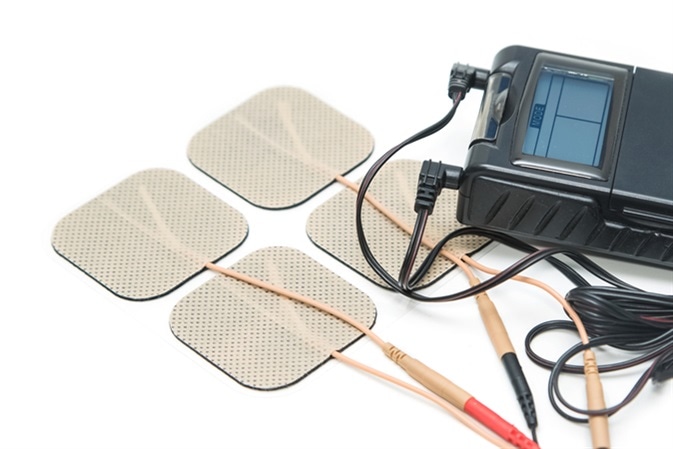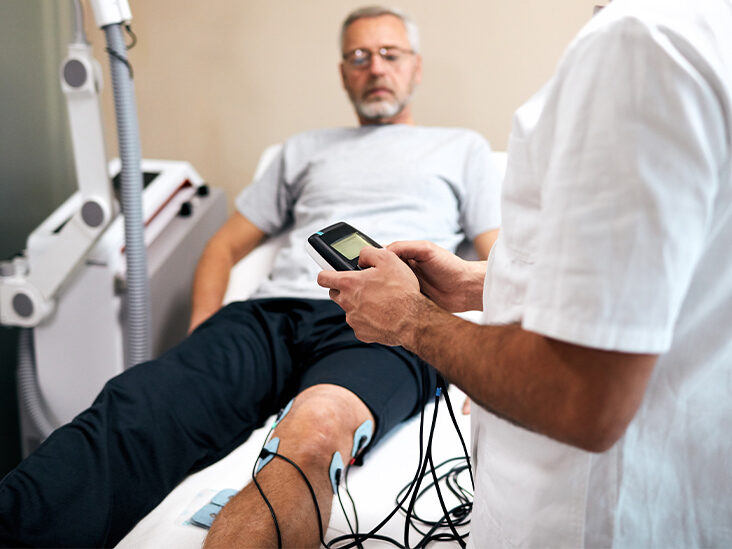Pain has been a part of life since the beginning of time.
Don’t you feel or have Pain from time to time?
You most likely have.
No pain, no gain, as the saying goes.
As in this case, we must accept pain in order to gain something.
Pain is a sign of hard work.

But what about the physical pain we all experience now and then?
We usually opt for immediate pain relief.
We will use drugs if the pain is severe or unbearable.
The intensity of pain varies as well.
An individual can experience emotional pain, physical pain, and so on.
It would be impossible to live your entire life without experiencing pain.
You must accept that pain is an inevitable part of life, but if you do not wish to use conventional medicine, You can always use a different method.
What are the alternative methods for pain relief?
First, let us know a little bit about this pain sensation and how and where it comes from.
Scientists are gradually elucidating the internal processes that result in the unpleasant sensation of pain.
Here’s a quick rundown of what happens when you experience one type of pain.
Let us feel the pain….as we travel down the PAIN pathway….
You get your finger pricked by something sharp. This causes tissue damage, which is detected by your skin’s microscopic pain receptors (nociceptors).
Each pain receptor is attached to one end of a nerve cell (neurone).
A long nerve fibre or axon connects it to the other end in the spinal cord.
When the pain receptor is activated, an electrical signal is sent up the nerve fibre.
A peripheral nerve is made up of many nerve fibres that are bundled together.
The electrical signal travels up the neurone of the peripheral nerve to the spinal cord in the neck.
Using chemical messengers, electrical signals are transmitted from one neurone to another across junctions (synapses) within the dorsal horn of the spinal cord (neurotransmitters). Signals are then transmitted to the brain via the spinal cord.
The signals are routed to the thalamus in the brain.
This is a sorting station that sends signals to various parts of the brain.
Signals are sent to the somatosensory cortex (responsible for physical sensation), the frontal cortex, and the prefrontal cortex. (in charge of thought), as well as the limbic system (linked to emotions).
As a result, you experience pain in your finger and think, “Ouch!”
What was that?’ or something similar, and emotionally react to the pain; for example, you feel annoyed or irritated.
You will, however, have probably reacted involuntarily even before you were consciously aware of the injury.
A reflex response occurs within the spinal cord in response to sudden, intense pain, such as that caused by pricking your finger.
Motor neurons fire, and the muscles in your arm contract, causing your hand to move away from the sharp object.
This happens in a fraction of a second, before the signal is relayed to the brain.
As just a result, you feel pain in your finger, think ‘Ouch! What was that?’ or something similar, and react emotionally to the pain; for example, you feel annoyed or irritated.
You will, however, have probably reacted involuntarily even before you were consciously aware of the injury.
A reflex response occurs within the spinal cord in response to sudden, intense pain, such as that caused by pricking your finger.
Motor neurons fire, and the muscles in your arm contract, causing your hand to move away from the sharp object.
This happens in a fraction of a second, before the signal is relayed to the brain, so you’ll have pulled your arm away before you even realise it.
Severe pain draws your attention quickly and usually elicits a stronger physical response than mild pain.
The location of your pain can also influence your perception of it.
Pain emanating from the head, for example, is more difficult to dismiss than pain emanating from another part of the body.
The location of pain in your body does not always indicate the source of the pain.
A heart attack, for example, can cause pain in the neck, jaws, arms, or abdomen.
This is known as referred pain, and it occurs when signals from various parts of the body converge on the same neurones in the spinal cord.
Ronald Melzack and Patrick Wall proposed in 1965 that there was a ‘gate’ mechanism in the central nervous system that opened to allow pain messages through to the brain and closed to prevent them from getting through.
The theory explains how the brain influences your perception of pain.
Several factors appear to influence how you interpret pain:
• emotional and psychological state;
• memories of previous pain;
• upbringing;
• pain expectations and attitudes;
• beliefs and values;
• age;
• sex; and
• social
* cultural influences
You may have felt pain somewhere in your body by this point because, as you know, where your focus goes, energy flows.
Do you currently experience chronic pain?
If that’s the case, how do you deal with such discomfort?
When you are in pain or your body is not functioning properly, it is natural for your body to seek pain relief.
t’s common human psychology to want to get rid of pain.
Is it really necessary to seek relief from chronic pain?
This is a question that deserves a thorough response.
Your thoughts naturally turn to the use of drugs for pain relief.
You are already aware that being overly reliant on drugs is harmful to your health.
As a result, an increasing number of people are turning to electronic machines or devices for pain relief.
The best option if you do not want to experience any side effects from the use of pain reliever drugs is to use devices or machines.
Such digital machines are convenient because the pain-relieving action begins as soon as you put them on.
Your normal activities are unaffected.
Have you ever heard of the efficacy of TENs?
TENs, or transcutaneous electrical nerve stimulation, works by stimulating your nerves through your skin.
Transcutaneous electrical nerve stimulation (TENS) is a pain-relieving therapy that employs a low-voltage electrical current.
A TENS unit is a battery-powered device that sends electrical impulses to the surface of your skin via electrodes.

The electrodes are placed on or near nerves that cause pain or at trigger points.
Transcutaneous electrical nerve stimulation (TENS) is thought to work in two ways.
According to one theory, the electric current stimulates nerve cells, which block the transmission of pain signals, thereby altering your perception of pain.
The other theory holds that nerve stimulation increases the level of endorphins, the body’s natural pain-killing chemical.
Endorphins then prevent the perception of pain.
To use it, apply the patch to the skin area where you are experiencing pain.
The electrical impulses from the TENs machine will enter through this conductive patch.
Your brain alerts you to the fact that you are in pain.
The machine’s electronic impulses block your sensory nerves, preventing pain signals from reaching your brain.
You will not feel pain if the pain signals are blocked, resulting in pain relief.
The machine generates signals that aid in the release of endorphins, or feel-good hormones.
The most recent TENs kits include an electrical probe that can be used to stimulate your body’s acupuncture points.
The machines are always labelled with warnings so that users know where to place the pads.
In order to determine the acupuncture points for neck and head pain, you should follow the machine’s instructions.
You must understand how to position the electrode pads in order for the machine to function properly.
If you have joint or muscle pain, the pads should be placed near the source of the pain.
For those experiencing nerve pain (sciatic), the pads should be placed over the sides of the spinal column and the top portion of the leg.
Inquire with your medical specialist about the machine.
There are many medical professionals who advocate for the use of TENs.
They can assist you in making the best use of the equipment.
The electrode pads must be placed correctly.
Always follow the manufacturer’s instructions to get the best results.
TENS units are both safe and simple to use.
Purchasing one is also not difficult.
There are numerous TENS units to choose from on the internet.
They are also available in a variety of stores, including your local pharmacy or drugstore.
However, before you buy one, keep in mind that there is no guarantee that it will work for you.
Also, keep in mind that insurance may or may not cover the cost of a TENS unit.
First, check with your insurance company.
Do not use the machine unless you are under the supervision of a qualified medical professional.
The machine, you see, cannot treat all types of pain.
You can determine if TENs are the best pain relief option for you with the help of a professional.
Consult your doctor right away, and if he or she recommends using the machine, you can always give it a shot.
As you are aware, certain drugs have negative side effects, and as a result, many people are hesitant to use them.
You can achieve desirable results if you put in a little effort to learn the alternative methods.
People have relied on natural pain relievers for centuries.
There is no harm in trying, and if alternative methods do not work, you can always return to traditional medicine.
When it comes to pain relievers, safety should always come first.
Who would want to aggravate their situation?
So, will it be massage, acupuncture, herbs, or relaxation therapy?
Choose now and discover a new way to relieve pain.
Here are some alternatives to pain medication for you to consider.
Massage –Many years ago, ancient civilizations used massage to relieve certain body pains.
Oriental traditions hold that the centre of the massager’s palm contains an energy source that can instantly relieve the patient’s pain.
Its effectiveness has long been established.
Have you heard of infant massage?
Mothers are encouraged to massage their infants to relieve muscular pains.
Massage therapy is already recognised as a profession.
If you don’t want to take medications, this is an effective and inexpensive pain relief option.
Acupuncture is an ancient science that originated in China.
The acupuncturist uses this method to insert tiny needles into the’meridians’ found in various parts of the body.
A lot of information about acupuncture can be found in magazines, newspapers, and on the internet.
If you choose this option, make sure to consult with a licenced acupuncturist to ensure your safety.
Only hire a professional.
Herbs – Herbs have amazing healing properties.
There is always an appropriate herb depending on the location and nature of the pain.
Relaxation Therapy entails achieving deep relaxation of both the mind and the body.
Reiki and Yoga are two examples of therapies that are now widely prescribed by some medical experts.
Even if you intend to use one of these alternatives, it is critical that you seek medical attention from a qualified professional.
If you intend to use herbs, you should consult a herbalist so that you can make the proper herbal preparations.
The other alternatives also necessitate professional attention in order to ensure the efficacy and safety of such methods.
It may take some time to notice the effects, but you must be patient, especially if you are taking alternative tools to relieve pain naturally.